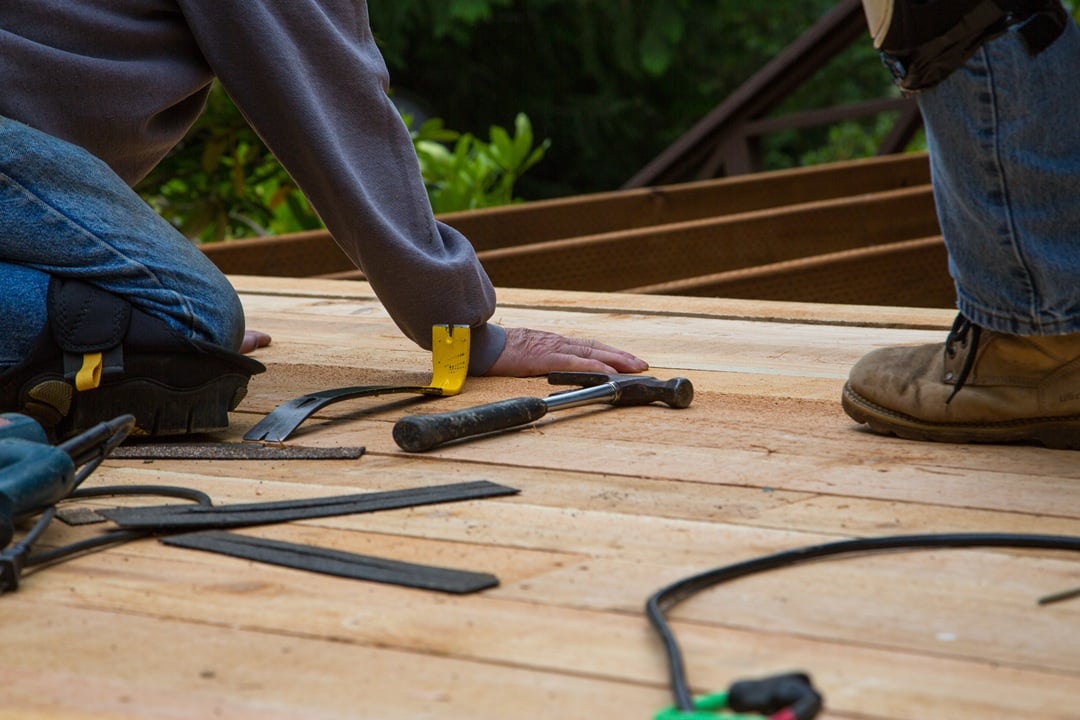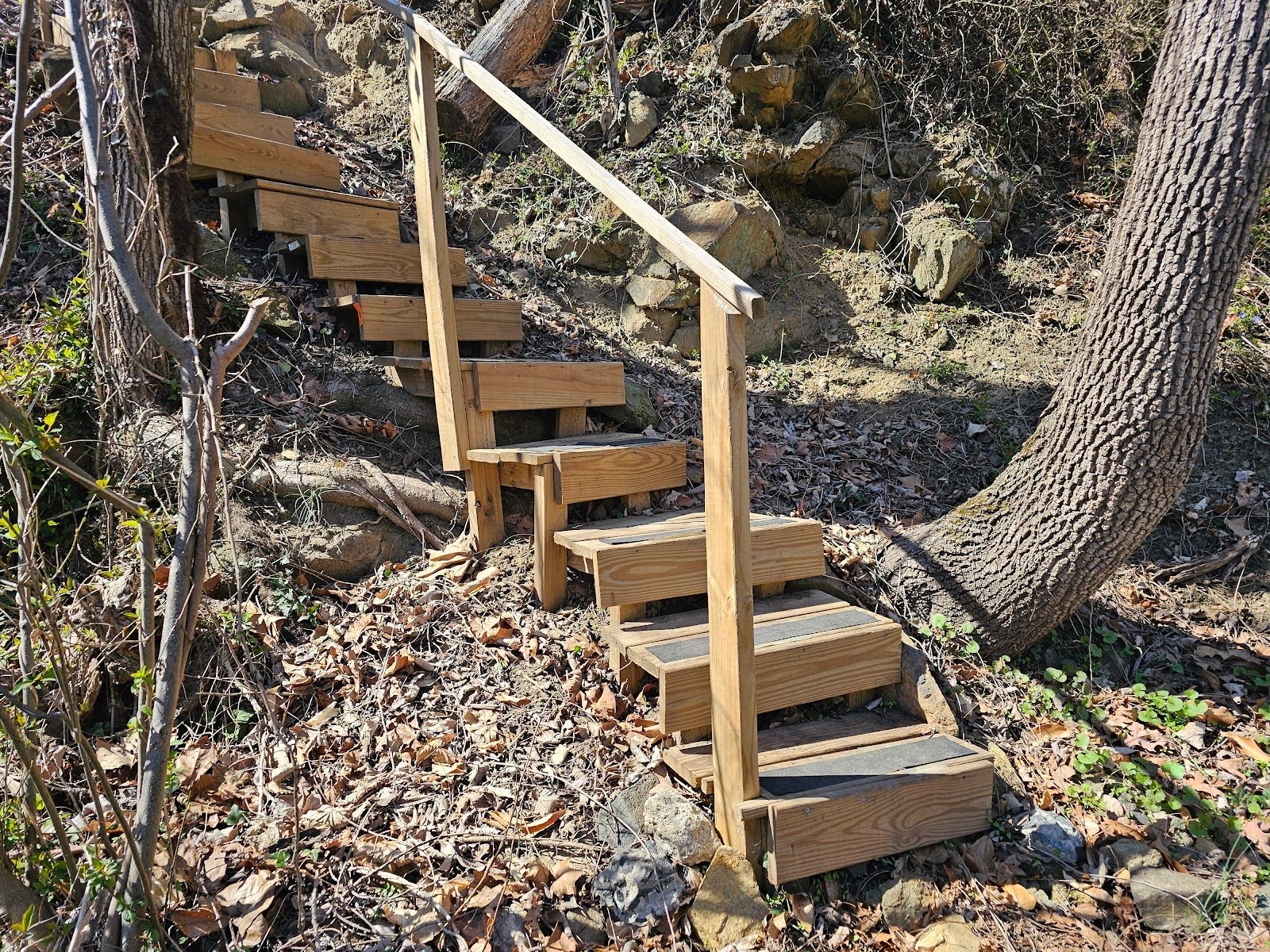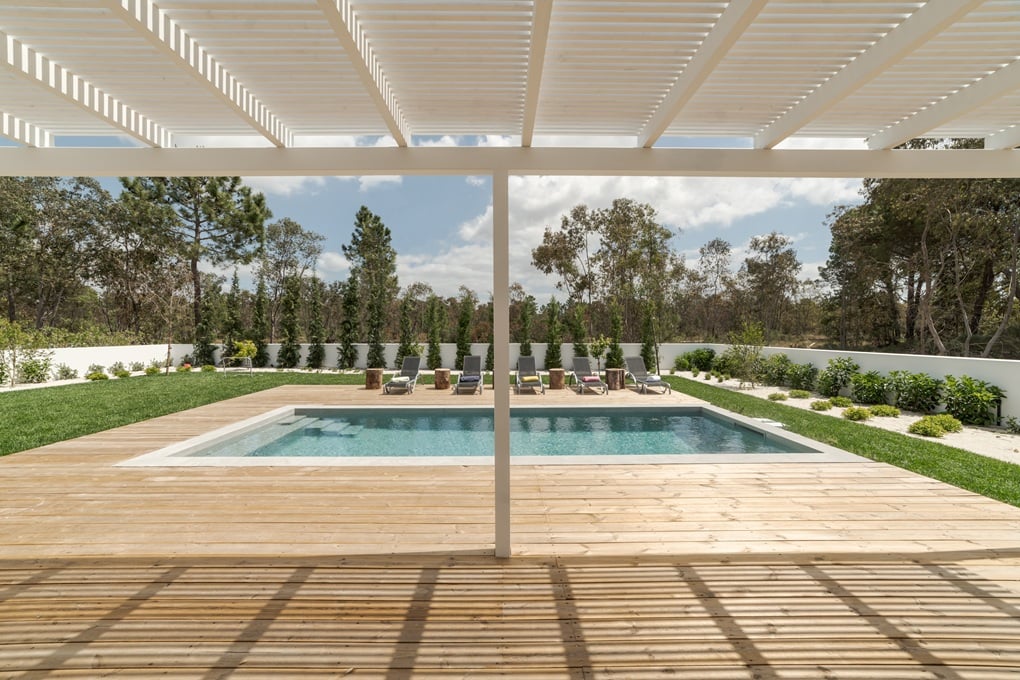Smart deck designs close to the ground
Because we write this blog, on a mission to show our customers and prospective clients and the public as much as we can about all of the details and options around deck construction, we always have our eyes open for interesting elements of decks and patios. Recently, in an area just outside of DC, we happen to see an interesting relatively small platform deck set into an area of a large yard.
The deck isn’t attached to the back of a house like many of the typical ones here in Washington DC. It’s literally set out in the middle of the open area like a small stage or platform away from everything else. In general, we often feel like if you’re going to just make a seating area out in the middle of the yard, it’s almost equally as good to instead just hardscape the area with a patio surface.

In cases like this, even when the purpose of an element of construction doesn’t make complete sense to us, as far as the usage, we can still look at the elements of the construction and learn something. Plus, we think it’s a good idea to be able to show our clients these details because people are always interested in learning and expanding their base of knowledge and understanding around things that fit within our areas of deck and patio construction.
Like many typical elevated decks, on the back of the houses and properties here in Washington DC, this deck is built in a similar type configuration, but there are some differences. Here, a 4×4 vertical post is used at the corners to connect the rim joist and slightly elevate the deck off of the ground.
The slight bit of elevation gives a little room for the area in all of the pockets between the joist base to breathe a bit and have a little bit of distance away from the ground to prevent or deter wicking of moisture directly from the ground into the framing wood. The individual posts are basically just set resting upon a scrap or extra piece of 2x lumber. This provides a relatively stable base, but unlike most backyard decks, this particular deck lacks any connection to a load path use both for stabilization and to prevent uplift during wind and weather conditions.

The deck stabilization and prevention of uplift from weather and climate forces are important. The building code considers these types of measures and provisions to be essential, in most types of deck construction.

Since there is a relatively significant grade in the overall landscape, they built the deck with a staggered, tiered level to accommodate that grade. In general, is a deck or patio is going to be set to conform to the grade, the deck or patio or adjacent grade must be modified to accommodate the deck. Both are able to be modified. The deck, as shown here, can be built in a terraced type layout with changes in the elevation of parts of the deck. Or, as an alternative a relatively simple retaining wall could be built at the lower side to raise that edge of the grade of the land.

Both options suffice and can functionally accomplish a layout that accommodates the deck. The problem with a step up or terraced sort of layout for a deck is that the change in elevation in the middle of the deck makes it more difficult to use the space as an open seating area where a table or chairs could be set around for collective gathering.
Here, in the next picture below, you can see a different angle of one of the post and bearing points. Although this does not meet most of the requirements, it appears that this deck has been installed at this particular location for many years. There is an aged patina on the surface of the wood and it probably needs significant maintenance at this point to refinish the surface and apply a chemical stain and sealer to prevent deterioration from exposure to the general weather conditions and some protection from ultraviolet rays.
The fact that the deck appears to be of significant age, yet doesn’t have significant differential settlement or problems of destabilization indicate that this particular layout, even without a concrete footing type base and connection, seems to have worked enough. We always recommend following the local requirements though.

In this coming week’s blog, we’ll take a closer look at some of the specific elements and talk about some other elements of intermediary spans and fasteners and general framing details.
Use a contractor who understands and cares about doing things right. Always, feel free to reach out to us here at Dupont Decks and Patios. We are happy to help with almost all steps of the deck building and design process. A backyard and outdoor space should make a significant, positive impact on both quality of life and home value. We can help with more than just decks, we also build patios, pergolas, ramadas, awnings, gazebos, arbors, and privacy fences.
Let us know about your ideas and talk to us if you have questions about possibilities. We are happy to participate in improving your outdoor space and quality of life! You can call us at (202) 774-9128. You can find us online at https://dupontdeckspatiosdc.com and you can email us there as well at https://dupontdeckspatiosdc.com/contact-us




